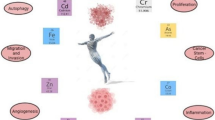Abstract
Ethylenebisdithiocarbamates (EBDC) are an important class of fungicides used to control crop diseases and prevent mold. Ethylenethiourea (ETU), reported to be their main degradation and metabolic product in animals and man, may have teratogenic and carcinogenic properties. The feasibility of monitoring exposure to ETU on the basis of the formation of adducts to hemoglobin (Hb) was investigated. Rats given a single oral dose of ETU (from 62.5 to 500 mg/kg body wt) formed stable covalent ETU-Hb adducts. Mild acid hydrolysis of the protein regenerated ETU, allowing its detection by isotope dilution gas chromatography-mass spectrometry (GC-MS). The amount of released ETU increased with the dose. The dose-response curve fitted a linear model only between 62.5 mg/kg and 250 mg/kg. Acid-releasable ETU was also positively identified in the hemoglobin of workers exposed to Mancozeb, an EBDC formulation. In the exposed group, 40% had ETU-Hb adducts levels ranging from 0.5 to 1.42 pmol ETU/mg Hb. Such adducts might be useful for measuring EBDC exposure in humans.
Similar content being viewed by others
References
Allen CFH, Edens CO, Van Allan J (1955) Ethylenethiourea. Organic Syntheses, Collect. Vol. III: 394–395
Decker CI, Doerge DR (1991) Rat hepatic microsomal metabolism of ethylenethiourea. Contribution of the flavin-containing monooxigenase and cytochrome P-450 isozymes. Chem Res Toxicol 4: 482–489
Doerge DR, Miles CJ (1991) Determination of ethylenethiourea in crops using particle beam liquid chromatography/mass spectrometry. Anal Chem 63: 1999–2001
Doerge DR, Takazawa RS (1990) Mechanism of thyroid peroxidase inhibition by ethylenethiourea. Chem Res Toxicol 3: 98–101
Granath F, Ehrenberg L, Törnqvist M (1992) Degree of alkylation of macromolecules in vivo from variable exposure. Mutat Res 284: 297–306
Hutchins DA, Skipper PC, Naylor S, Tannenbaum SR (1988) Isolation and characterization of the major fluoranthene-hemoglobin adducts formed in vivo in the rat. Cancer Res 48: 4756–4761
Israeli R, Sculsky M, Tiberin P (1983) Acute intoxication due to exposure to maneb and zineb. A case with behavioural and central nervous system changes. Scand J Work Environ Health 9: 47–51
Koizumi A, Shioujima S, Omiya M (1979) Acute renal failure and maneb (mangane ethylenebis(dithiocarbamate)) exposure. JAMA 242: 2583–2585
Krause RT (1989) Liquid chromatographic-electrochemical determination of ethylenethiourea in foods by revised official method. J Assoc Off Anal Chem 72: 975
Kurttio P, Vartiainen T, Savolainen K (1988) A high performance liquid chromatographic method for the determination of ethylenethiourea in urine and filters. Anal Chim Acta 212: 297–301
Kurttio P, Vartiainen T, Savolainen K (1990) Environmental and biological monitoring of exposure to ethylenebisdithiocarbamate fungicides and ethylenethiourea. Br J Ind Med 47: 203–206
National Research Council (1987) In: Regulating pesticides in food. The delaney paradox. National Academy Press, Washington DC, pp 208–214.
Neumann HG (1984) Dosimetry and dose-response relationships. In: Berlin A, Draper M, Hemminki K, Vainio H (eds) Monitoring human exposure to carcinogenic and mutagenic agents. IARC, Lyon, pp 115–126.
Savolainen K, Kurttio P, Vartiainen T, Kangas J (1989) Ethylenethiourea as an indicator of exposure to ethylenebisdithiocarbamate fungicides. Arch Toxicol Suppl 13: 120–123
Skipper PL, Tannenbaum SR (1990) Protein adducts in the molecular dosimetry of chemical carcinogens. Carcinogenesis 11: 507–518
Smith DM (1984) Ethylenethiourea: thyroid function in two groups of exposed workers. Br J Ind Med 41: 362–366
US Environmental Protection Agency (1989) Ethylene-bis-dithiocarbamates; notice of preliminary determination to cancel certain registrations, notice of availability of technical support document and draft notice of intent to cancel. Fed Reg 54: 52158–52185
Van der Poll JM, Versluis-de Haan GG, de Wilde O (1993) Determination of ethylenethiourea in water samples by gas chromatography with alkali flame ionization detection and mass spectrometric confirmation. J Chromatogr 643: 163–168
World Health Organization (1988) Dithiocarbamate pesticides, ethylenethiourea, and propylenethiourea: a general introduction. In: WHO Environ Health Criteria 78, Geneva
Author information
Authors and Affiliations
Rights and permissions
About this article
Cite this article
Pastorelli, R., Allevi, R., Romagnano, S. et al. Gas chromatography-mass spectrometry determination of ethylenethiourea hemoglobin adducts: a possible indicator of exposure to ethylene bis dithiocarbamate pesticides. Arch Toxicol 69, 306–311 (1995). https://doi.org/10.1007/s002040050175
Received:
Accepted:
Issue Date:
DOI: https://doi.org/10.1007/s002040050175




